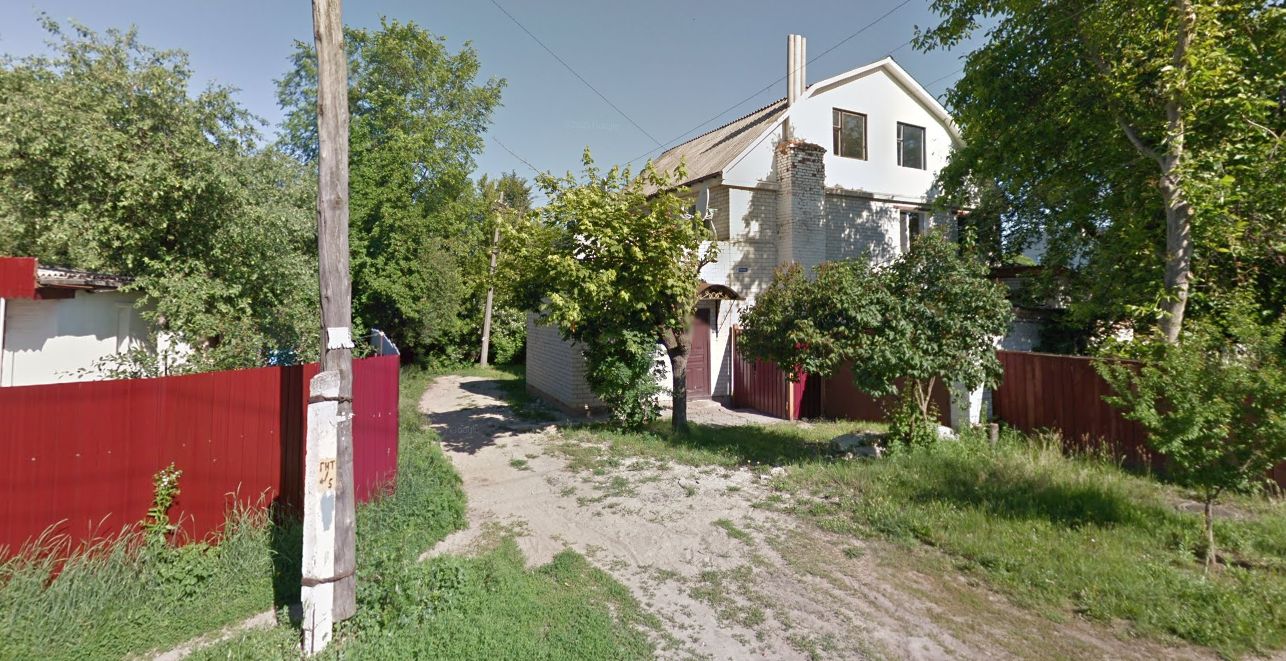
May 12, 2022, by Helen Whitehead
The Courtyard
The painting “A Courtyard in Chernihiv”, by Victor Onyschchenko, shows what I’d probably call a back alley. It’s that space behind the house (or beside the house) where you park your bike, play with the dog, kick a ball around, do a bit of experimental “gardening”. This courtyard is in a city far away, but I think most people could identify the space it represents, a liminal space dimly remembered from childhood between home and the outside, with limitless possibilities.
It sits in a network of little streets in what is probably called the “Old Quarter” not far from the city centre but in nature rather removed from it. Unmade roads snake between a surprising amount of greenery for a city – it looks more like a village. There are single storey houses plonked willy nilly, facing every which way – made of wood and corrugated iron and patched with many different materials. There aren’t always road name signs and there aren’t always house numbers, so exploring the area methodically would be quite challenging.
Yet a short stroll away are white boulevards at strict right angles with formal street signs and imposing buildings; a cathedral, hotels, offices…. It reminds me of the way we have come to see well-designed learning – form and function fitting appropriately, designed for both ease of use and visual impact. And so it should be, both in our cities and in our learning spaces, classrooms and online.
But there is also something to be said for exploration, for enticing learners into an enchanting maze of discovery. You might never find that little green gate that you were told is there somewhere, so a learning space designed after this model could not be for the highest-stakes assessed learning – you couldn’t risk students missing something vital by taking a wrong turn – but it could be a way to introduce the extra, additional inquiry that takes you beyond exam prep and into the mindset of lifelong learning and curiosity.
We need to create liminal spaces between the teacher-curated formal ones and the learner-centred informal self investigation and play, where the joy of the journey is a large part of what motivates the learner. We can encourage them by creating playful spaces, a little chaotic, where learners can explore what they find interesting, and discover for themselves a story that is related to and expands on the one the teacher puts first and foremost. Creative activities, games and experiments, collaborative and group projects and intriguing sparks for discussion could all play a part. What the learning designer can most usefully provide, as in the city, is a rudimentary map and the skills to navigate without getting totally lost.
As an example, a learner might discover, prompted by a teacher’s suggestion to find out more about a painting by a Ukrainian artist, a treasure house of culture, arts, community and people that help to put current events into context.
No comments yet, fill out a comment to be the first

Leave a Reply